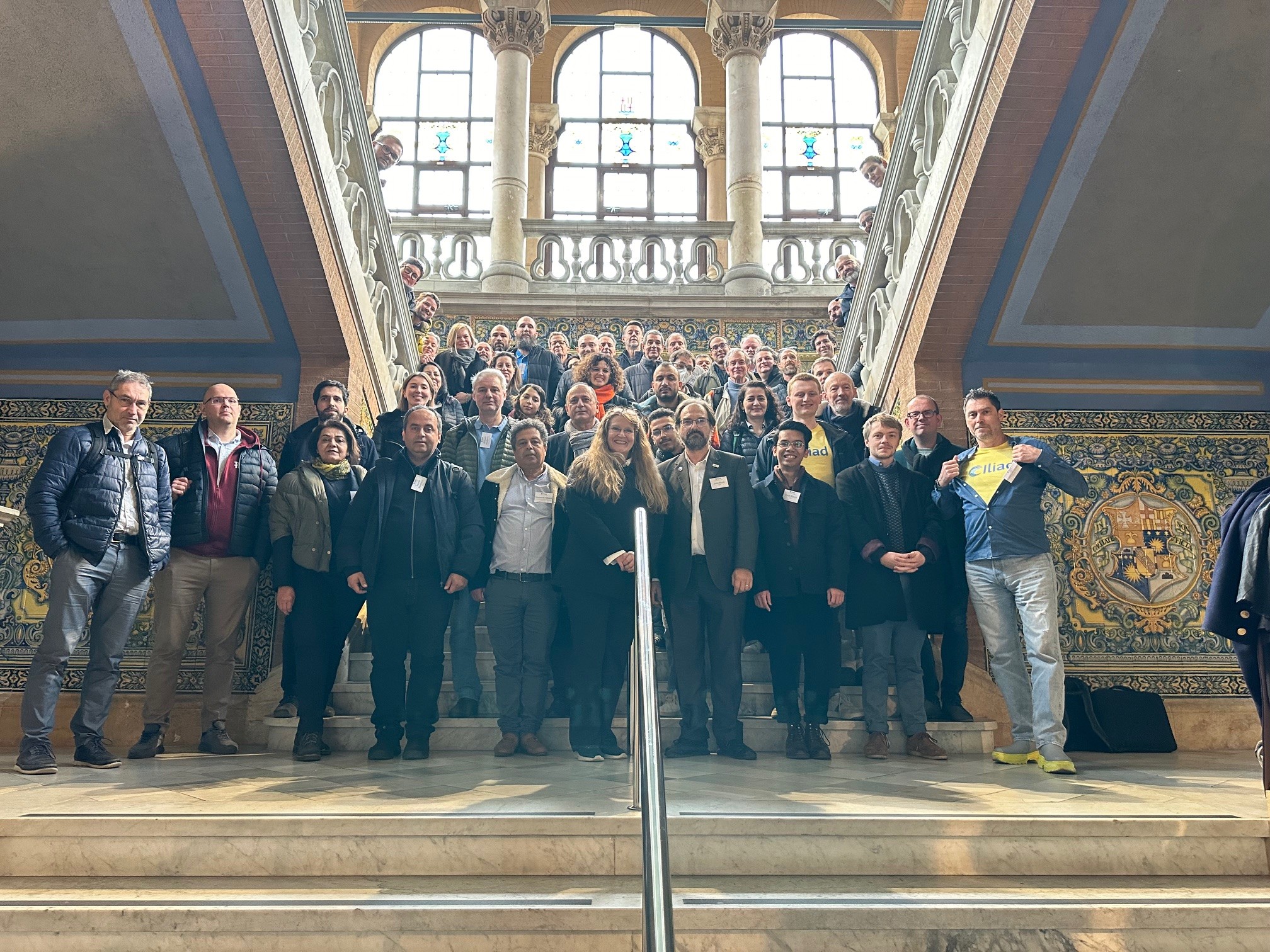ILIAD Meets to Discuss Pilot Progress in Barcelona

The ILIAD project, a flagship initiative under the Horizon 2020 Research and Innovation programme, convened for its annual General Assembly in Barcelona from December 19th to 20th, 2023. Over 3 years the ILIAD project will develop innovative digital twins of the ocean based on a range of pilot projects currently being developed by project partners. The General Assembly was hosted at the Casa Convalescència, a UNESCO Historic Artistic Monument and Cultural Heritage of the Humanity and organised by CREAF, the Universitat Autònoma de Barcelona, as well as Project Coordinators Netcompany-Intrasoft.
The ILIAD consortium is composed of 56 International Partners from 18 countries, featuring expertise from across marine science, R&D, environmental research, data science, geospatial technologies, project management, and communications sectors. The General Assembly therefore represented an important opportunity to bring together the different perspectives and undertakings of the project to understand the progress and chart the next steps.
The pilots, as central to the project, were also a strong focus of the General Assembly, with 24 pilots invited to present their solution and its current state of development. The pilots showed a high level of advancement with their digital twins, with many demonstrating their capabilities through examples of modelling or use cases. In particular, many focused on their incorporation of citizen science within the digital twin, such as an app for reporting jellyfish sightings feeding into a jellyfish swarm forecasting model, helping to support local authorities and utilities located along the coastline. Notably, the emphasis was also on showcasing sustainable business models and robust end-user engagement strategies, crucial for commercial viability beyond the project’s conclusion in 2025.
Among the pilots showcased included a Digital Twin of the Ocean designed specifically for addressing oil spills in the Cretan Sea. This innovative digital twin integrates advanced high-resolution forecasting services, data from Sentinel 1 satellites under the EU Copernicus program, real-time in-situ observations, AIS data retrieved from vessel transponders, and various other pertinent data sources, combined with sophisticated machine learning models. Collaboratively led by FORTH and MEEO, the demonstration highlighted the impressive predictive capabilities of their digital twin in foreseeing and projecting oil spill incidents. By enabling near-real-time tracking and modelling of such spills, the digital twin empowers responders with accurate visualisations and actionable insights regarding the developments, significantly enhancing the precision and effectiveness of mitigation strategies.
Each pilot focus on a particular maritime aspect or activity, with different pilots developing digital twins on: Wind, Tidal, and Wave Energies, Plastic Pollution Monitoring, Oil Spills, Meteorology & Oceanography, Coastal Sediment Transport, Aquaculture, Fisheries, Ballast Water Monitoring, Jellyfish Swarm Forecasting, Harbour Safety, and Insurance. What makes ILIAD unique is the focus on interoperability, with the project founded on a federated system-of-systems approach to digital twins enabling simultaneous exploitation of large volumes of different types of data and sources. This means that the pilots are in fact just the foundation of an evolving ecosystem of innovative virtual representations of the sea to be hosted on the upcoming ILIAD Marketplace.
Eurisy participates in ILIAD through its communication and policy impact activities. These ensure that stakeholders are made aware of the possibilities and benefits of the digital twins and create understanding of the support ILIAD brings to various maritime and sustainability policies, such as the EU’s Green Deal and the UN Sustainable Development Goals. To this end, Eurisy supports the organisation and promotion of webinars, the creation of the ILIAD Academy to provide training on ILAID technologies, develops policy briefs and recommendations, and measures policy impacts.
